Written by
Michelle McGuire
2020 disrupted retail as we know it. Consumers shopped online in record numbers, physical stores temporarily (or in some cases permanently) closed, and brands scrambled to adapt to this new normal. As COVID continues to drive new behaviors in 2021, the store of the future is approaching quicker than ever before.
For this special edition of Spy 10, we took the pulse of these latest retail trends and had a conversation with team members Adrienne Muken (Creative Director) and Michelle McGuire (Strategist) to unpack what they mean for your brand in terms of packaging, POS, and 360° experience.
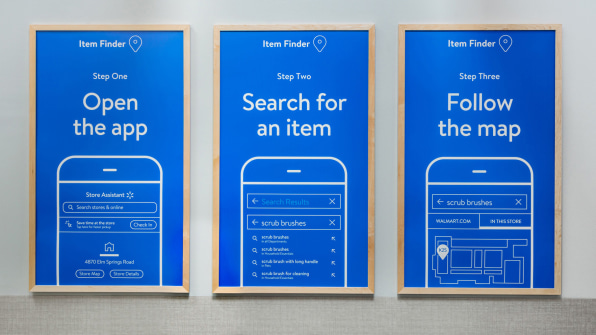
1. Browsing is Dead (For Now)
2020 changed shopping in a major way. Lazily browsing aisles of your favorite store with a coffee in hand has turned into online shopping, curbside pickup, and quick visits only when necessary. Taking this shift in stride, some retailers are rethinking their store design to give shoppers the quickest and easiest experience possible. As get in and get out becomes the new consumer mantra, expect to see expanded curbside pickups, streamlined in-store signage, and apps that guide you through the store.
Inspiration
Taking cues from airports and theme parks, Walmart's new store design champions navigational efficiency above all else. Taking cues from airports and theme parks, Walmart’s new store design champions navigational efficiency above all else. Walmart is consolidating scattered categories into their own dedicated sections and then redoing signage to point you around the space. Expect to see an information board right upon entering the store as well as clearer and bigger signs and arrows. Walmart’s new shopping experience also syncs with the Walmart app. Shoppers can search for whatever they want within the app and learn where it is within the store. Expect to see this new design in 1000 Walmart stores by the end of 2021.
Takeaway
As browsing becomes less common, the role of packaging will change. We expect to see pared down packaging that simplifies the main message and prioritizes claims so shoppers can get all the information they need as quickly as possible. How can your brand adapt its own packaging to follow suit?
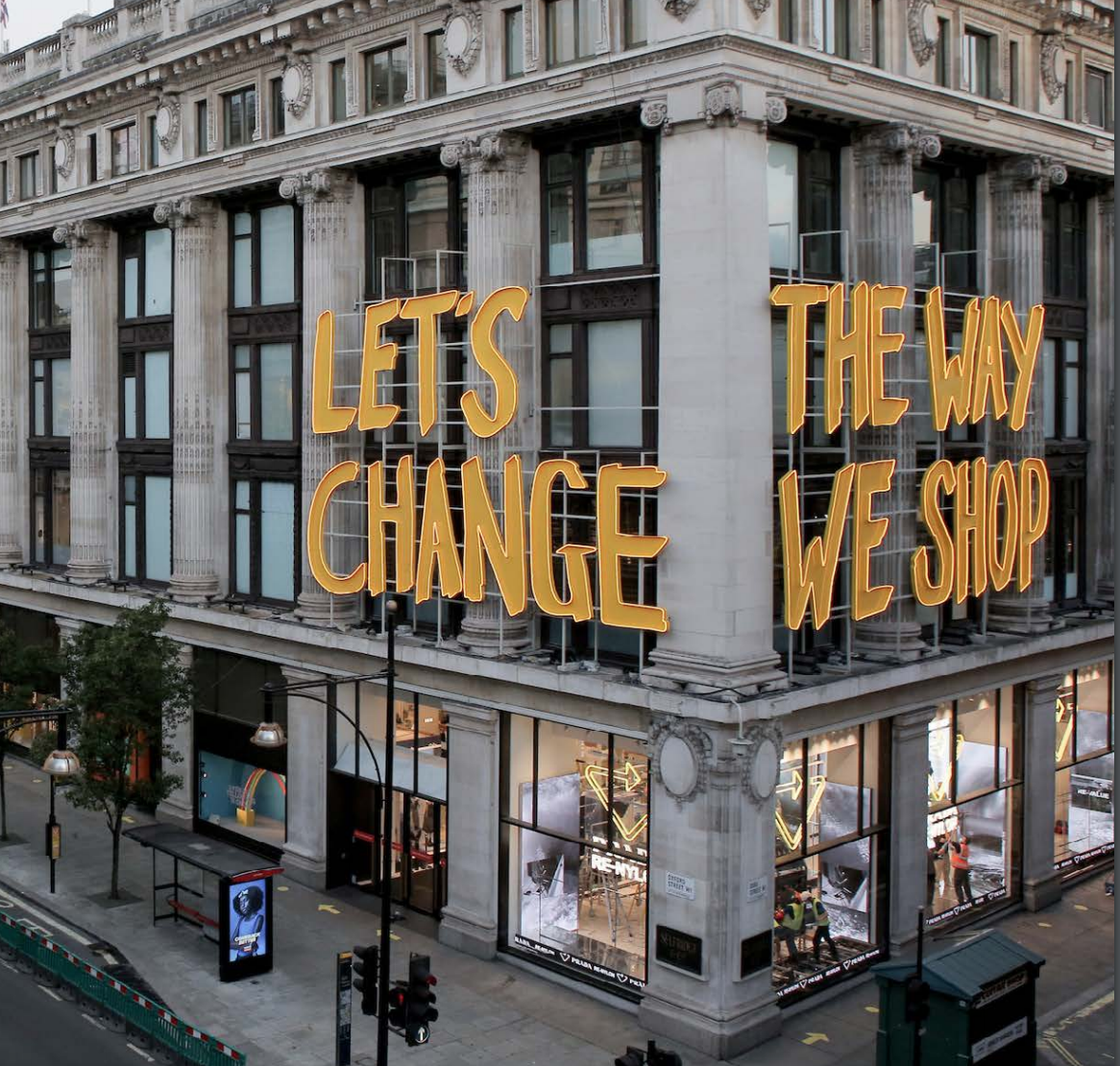
2. Can't Touch This
Gone are the days of not worrying who has touched what. Driven by the need to reduce the frequency of touch during the pandemic, touchless innovations have boomed within stores. And shoppers have happily embraced this trend as virtual try-ons and contactless payment go mainstream. Expect this to even affect the design of the store itself as retail experiences experiment with sight, sound, and smell above touch.
Inspiration
For an industry historically based on in-store sampling, makeup has undergone a massive touchless transformation. The new MAC Innovation Lab cosmetics store is all about being touch-free as the concept seamlessly blends physical and digital. Shoppers can use in-store stations to virtually try on products, experiment with different looks created by local makeup artists, and analyze their skin tone for the perfect foundation.
Takeaway
Technology isn’t going to completely fulfill shoppers’ desires for trialing items. We see innovation playing a big role here in brands finding new ways to allow consumers to try or “preview” an experience. This could look like everything from more functional single use packaging samples to far more innovative packaging that incorporates sensory experiences beyond touch. Think about how you can place your brand back in the hands of consumers.
3. Social + Retail = The Perfect Match
Integrating social media and digital engagement into stores is evolving beyond a selfie station, an official hashtag, or checking in. Retail is adding all sorts of digital bells and whistles to their physical stores like ecommerce, social media integration, and gamification to engage with shoppers in new ways. Think in-store apps that unlock special events and allow for product personalization and partnerships with social media platforms.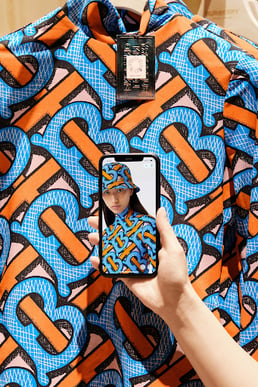 Inspiration
Inspiration
Opened July 2020 in China, Burberry’s first “social retail store” perfectly blends the social media platform WeChat with their in-store experience. Shoppers can book appointments, reserve fitting rooms, and scan codes to learn about products on WeChat, all while accruing social currency. This currency unlocks exclusive experiences and rewards like special menu items and exclusive content. Throughout this entire experience shoppers have a Bambi-like avatar that evolves and grows as they engage with the store.
Takeaway
Digital is an essential part of the brand experience. Integrating social media into your retail experience creates an opportunity to engage and connect with consumers in a way that is natural to them. We expect to see brands maximize their touch points to immerse their consumers in their brand world in new ways. How would your brand interact in a world where social and retail become intertwined?
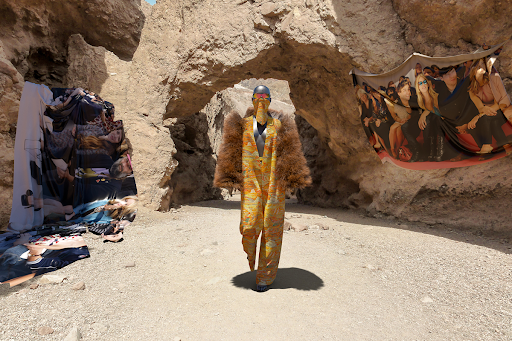
4. Other Worldly Escapes
People are hungry for escapism right now and retail is stepping up to offer fantastical and imaginative experiences. This is mainly happening digitally as retailers experiment with immersive and experiential retail experiences that don’t rely on physically bringing shoppers together inside a space. Fashion designers are digitally presenting their clothing against otherworldly backdrops like the cavernous pink rooms and winding sage-green paths seen in the 2020 ICY runway show. These fantasy digital renderings are also seeing a rise in popularity in interior hinting at a more fantastical experience both IRL and URL
Inspiration
Virtual fashion house The Fabricant produces designs that only exist digitally. The brand creates one-of-a-kind outfits for customers’ avatars to digitally wear on social media and gaming platforms. Every creation is showcased against dream-like settings like intergalactic terrain to reflect the brand’s futuristic and visionary style. The company has seen a huge recent spike in interest as customers live increasingly digital lives.
Takeaway
So much of brand building is about figuring out how to fit into consumers’ lives and solve pain points in their world. But in today’s environment, consumers are craving imaginative experiences that help them escape. What would it look like if your brand wasn’t limited by physical boundaries and could freely create your own virtual world? This is an opportunity for brands to play, create, and explore new concepts in a world where there are no limits.

5. Shopping Goes Live
It’s hard to beat the experience of in-store shopping in person, but live streaming might be the next best thing. With physical contact still limited, live streaming is the closest some retailers have been able to come to their customers as they demonstrate products and interact in real-time. According to The Interactive Advertising Bureau, livestream-generated sales are expected to double to $120 billion worldwide in 2021. Moving forward, expect to see live streaming become branded and interactive entertainment like Bon Appetit's Test Kitchen Variety Show.
Inspiration
For inspiration on live streaming, keep an eye on what brands are doing on streaming platform Livescale. Livescale has partnered with Shopify, a popular ecommerce platform for small businesses, to provide brands with an interactive live shopping platform. Reporting a fivefold increase in business requests since March 2020, Livescale has worked with many big-name beauty brands like Urban Decay, Kiehl’s, and It Cosmetics. Urban Decay used the platform for their popular and entertaining Pride makeup tutorial with Canadian drag queen Sofonda Cox.
Takeaway
Live streaming is another way for brands to bring experiences straight to consumers. You should consider experimenting with live streaming as a way to interact with consumers - whether to collect real time feedback, create brand love through community, or to add a human element to a traditionally transactional experience.
6. Next Level Merchandising
As 2020 put brick and mortar stores to the test it left retailers with a pressing question, “what can my in-store experience provide that digital shopping can’t?”. Enter augmented merchandising, the next level of product trialing. Retailers are integrating digital media, interactive displays, and experiential tech like VR into product experience so shoppers can see how products fit and perform in multiple scenarios and settings. Expect to see retailers incorporate more of this into the in-store experience as a differentiator.
Inspiration
Canada Goose’s “The Journey” store concept is completely inventory-free, although it does allow users to see their full range of products with same day home delivery. Instead the concept focuses on experiential rooms where visitors learn the Canada Goose story and put the product to the test in the Cold Room. Designed to bring the outdoors inside, the Cold Room is kept at 10°F and immerses the shopper in floor-to-ceiling Arctic landscapes and actual snow.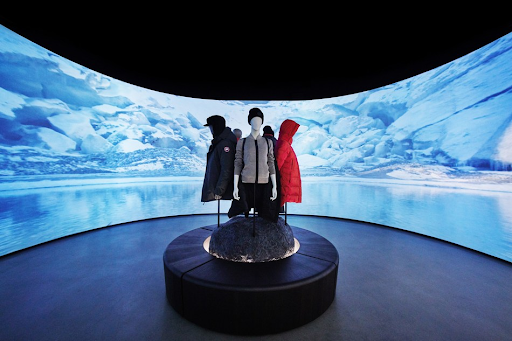
Takeaway
What physical realities does your brand live in? How can you bring those to your consumers’ shopping experience? You have the opportunity to put your products in a real life context to show (not just tell) consumers the benefits. This also adds an immersive dimension to your brand storytelling, allowing consumers to interact with your brand in ways they never have before.
7. Shop Smarter
While in-store, shoppers are used to having to go to certain areas to do certain things like checking out, trying on, and accessing customer service. But as new mobile and IoT technologies enter the picture, the in-store experience is becoming more flexible and fluid. Retailers are evolving in a way where everything from checking out to trying out can happen anywhere in the store.
Inspiration The Amazon Dash Cart is a smart shopping cart with weight sensors and cameras that scan your items as you place them in the cart so you can skip the checkout line. It also features a screen where you can access your shopping list, view your subtotal, and apply store coupons.
The Amazon Dash Cart is a smart shopping cart with weight sensors and cameras that scan your items as you place them in the cart so you can skip the checkout line. It also features a screen where you can access your shopping list, view your subtotal, and apply store coupons.
Takeaway
We expect to see brands experimenting with creative merchandising and unexpected pairings as the quick trip to the store gets even quicker. Impulse purchases aren’t dead but need to consider when those moments will occur in this new context. Can you think about your brand in the broader context of a consumer occasion and identify opportunities to “go beyond your aisle”?
8. Keeping it Local
An unexpected positive of 2020 was the resurgence of local shopping. Customers are shopping close to home due to an unwillingness to go to big shopping centers and the desire to support their immediate communities. Expected to extend past lockdowns, research shows 41% of consumers intend to buy more locally in the future. As a result, big retailers are evolving their retail concepts to better serve and connect with the local communities they’re in. Expect to see a departure from a one size fits all store as individual stores feature local products and art, develop regional campaigns, host community events, sponsor initiatives that give back to the community, and more.
Inspiration
Nike is adding another concept to its retail fleet with “Nike Rise”. Rise is all about connecting consumers to sport, their communities, and one another. The store features a digital calendar with local events, including ones sponsored by Nike at nearby sports centers. Within the Nike app, shoppers can also sign up for weekly sports activities tailored to locale and access in-store workshops and events hosted by the city’s network of Nike athletes, experts, and influencers.
Takeaway
How is your brand connecting with the communities you’re a part of? Consider the unique regions and cities your brand is in and understand their passion points. Develop experiences, initiatives, and storytelling around these passions so communities feel seen and understood.
9. Stores Go Dark
What does a retail store look like with no shoppers? Dark stores are figuring that out. As online sales boom, retailers are converting retail stores into dark stores which solely cater to online order fulfillment. This solves multiple pain points across retailers and consumers. Consumers are shopping even more online and expect instant gratification with immediate pick up or same day delivery. Retailers have a surplus of unused space that can be adapted to fulfill these orders and act as local fulfillment hubs for consumers to get their orders faster. Expect to see this increase as retailers focus on online orders and adapt their remaining in-person stores to be smaller and more specialized.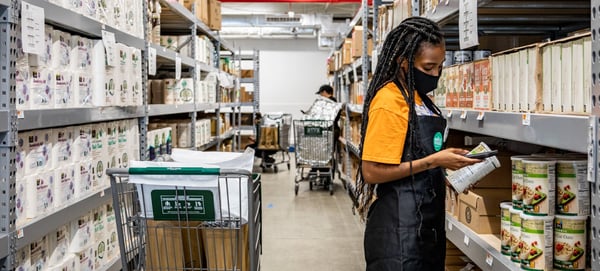
Inspiration
In September 2020, Whole Foods opened its first online only store in New York City. This store is just for order fulfillment and pick-up and features longer aisles, bigger freezers, and refrigerated coolers for fresh produce. Whole Foods is also experimenting with a semi-dark concept where a location in San Francisco is closed in the afternoon in order to focus on online shopping.
Takeaway
Dark stores cut out the in-person retail experience. How can your brand build and maintain a strong presence without relying on shelf space? Online shopping via dark stores could provide opportunity for experimentation and innovation. We foresee more collaboration between brands and delivery platforms to reach consumers in new ways (like Parachute’s partnership with Postmates).

10. Everything is Beauty
Long gone are the days of beauty retail just offering makeup. 2020 only accelerated this trend in a major way thanks to the classically back aisle product of hand sanitizer. Beauty aisle takes on hand sanitizer are selling out in record numbers as brands like Touchland incorporate elements like scents, moisturizing elements, and refined packaging in. This elevation of functionality to beauty is also being seen as Ulta stocks bedding with Slip’s beauty pillowcases and Resoré emerges as a brand offering antibacterial beauty towels. Expect the beauty aisle to continue to expand as more brands redefine offerings to be included.
Inspiration
Around since 2016, Blume is a Gen Z period care brand that offers pads and tampons as well as skin care products designed around women’s unique needs. Recently Sephora and Blume partnered to make period care a part of the beauty aisle for the first time. Starting in September 2020, Sephora began stocking period products available to Canadian shoppers with hopes to expand in the future.
Takeaway
Categories are becoming increasingly fluid. We expect consumer mindset to become just as important when innovating a new product as category cues. To start thinking this way, ask yourself what you want your consumer to feel when using your product. This will push your brand to consider new areas of the store to enter and different ways to reach your consumers.
Follow us on LinkedIn and subscribe to our newsletter to receive insights and trends in the world of branding.
Sign up for the latest news and views
